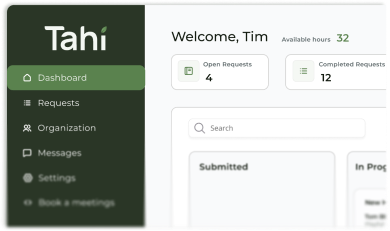Client-First
Client-First is a naming convention and strategic framework for Webflow that ensures projects are organised, scalable, and easily manageable for any developer.
What is the Client-First framework and why does it matter?
Client-First is a comprehensive methodology and naming convention for building Webflow websites, developed by the team at Finsweet. It provides a systematic approach to organising and structuring websites that makes them more maintainable, scalable, and understandable for any developer who works on the project. Think of it as a universal language for Webflow development that eliminates the chaos of inconsistent naming and organisation.
This framework addresses a common problem in web development: projects that become increasingly difficult to manage over time. Without a systematic approach, Webflow projects can end up with confusing element names like 'Div Block 47' or 'Section new final', making updates time-consuming and error-prone. Client-First establishes clear, logical naming conventions that make every element's purpose immediately obvious to anyone working on the site.
How does Client-First benefit businesses long-term?
The primary business benefit of Client-First is ownership and flexibility. When your website is built using this systematic approach, you're not locked into working with a single developer who's the only person that understands the project structure. Any professional Webflow developer familiar with Client-First can quickly understand and work on your site, giving you more options and potentially better pricing for future updates and enhancements.
This methodology also significantly reduces the time and cost of making changes to your website. Instead of developers spending hours trying to understand how a site is structured, they can immediately locate and modify the elements they need. This efficiency translates directly into faster turnarounds and lower costs for updates, making your website a more agile and cost-effective business asset over its lifetime.
Does using a framework limit creative design possibilities?
This is a common misconception that's important to clarify. Client-First is purely a structural and organisational framework, not a design framework. It has no impact whatsoever on the visual appearance, creativity, or uniqueness of your website. The framework governs how elements are named and organised in the backend, not how they look or function on the frontend.
A highly creative, visually stunning design crafted in Figma can be built perfectly using Client-First methodology. The framework provides the organised foundation that supports unlimited creative expression. In fact, by providing clear structure and reducing technical debt, Client-First often enables more creative freedom because developers can focus on implementing innovative designs rather than wrestling with disorganised code structures.
How does Client-First improve website maintenance and updates?
Maintenance becomes dramatically more efficient when a website follows Client-First principles. The logical naming conventions mean that finding and updating specific elements is quick and straightforward. For example, instead of hunting through dozens of generic 'Div Blocks' to find a navigation element, you can immediately locate 'navbar_menu' or 'navbar_button'. This clarity saves hours of work on every update.
The framework also makes it much easier to implement new features or sections consistently with the existing design. When adding new content or functionality, developers can follow the established patterns and naming conventions, ensuring that new elements integrate seamlessly with the existing structure. This consistency prevents the gradual degradation that often happens when websites are updated without a systematic approach, maintaining quality and performance through our strategic approach.
How does Tahi Studio use Client-First to deliver lasting value?
At Tahi Studio, adopting proven methodologies like Client-First reflects our commitment to building websites that serve our clients well beyond the initial launch. We believe that true quality goes deeper than surface aesthetics to include the fundamental structure and organisation that determines how well a website will serve your business over time.
Our use of Client-First methodology ensures that every Webflow project we deliver is built for longevity, maintainability, and scalability. This approach gives you true ownership of your digital asset and the flexibility to work with different developers in the future if needed. It's part of our broader commitment to transparency, quality, and genuine partnership. Through our subscription model, we build websites that can evolve and grow with your business through our transparent processes, always maintaining the organised foundation that Client-First provides.






